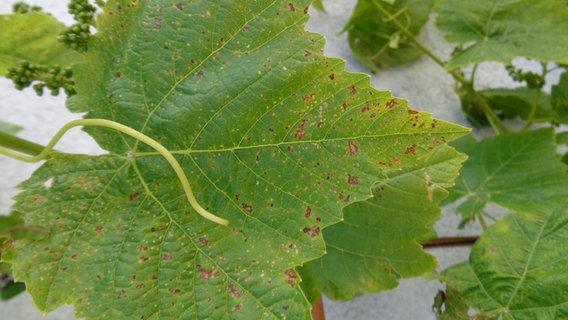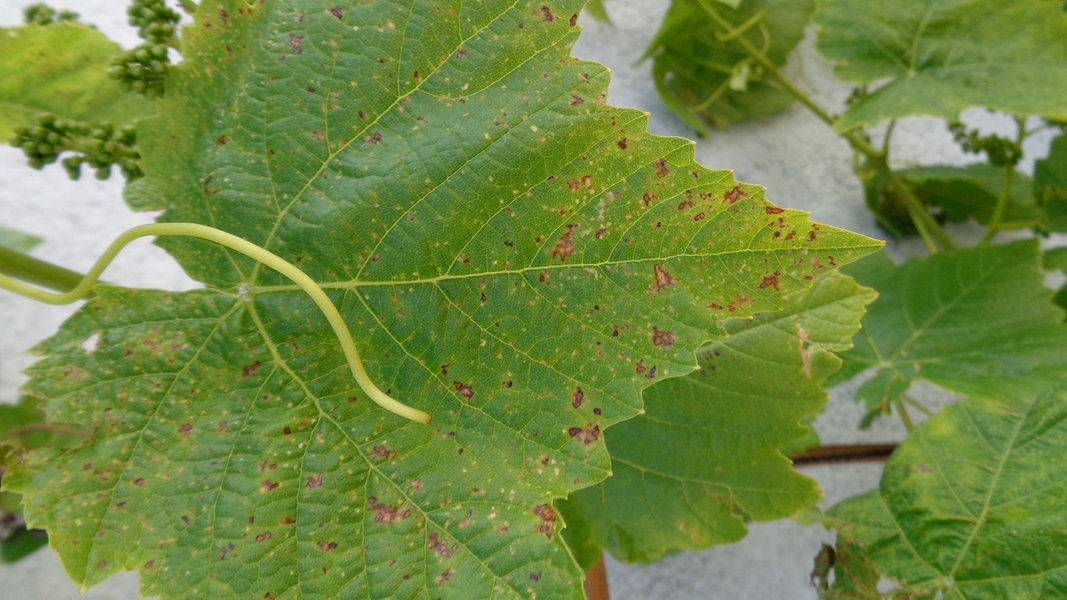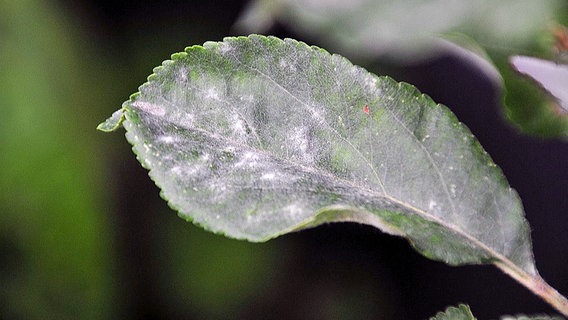Status: 05/24/2023 11:23 am
White coating on top of leaves or discoloration and spots are signs of powdery mildew or downy mildew infestation. How can the fungus be treated naturally?
Powdery mildew is a widespread fungal disease in crops and ornamental plants that occurs in more than 100 different species. Some species, such as apple powdery mildew, only affect certain plants. A general distinction is made between powdery mildew and downy mildew. It is important to recognize the difference, because the two forms have different causes and are also combated differently.
The fair weather fungus: powdery mildew
A mealy white coating on the upper side of the leaves is the typical damage caused by powdery mildew.
Powdery mildew is what is known as a fair-weather fungus, which means it forms when it is warm and dry. It can be recognized as a wipeable, white, later dirty-brownish coating on the upper side of the leaves and the flowers. The leaves turn brown and dry up, the flowers wither. In the case of a severe infestation, entire parts of the plant can die. Powdery mildew mainly arrives roses, asters, cucumbers, carrots and gooseberries.
Cut plants and treat with home remedies
Infested plant parts must be removed and disposed of. A treatment with milk is then recommended. To do this, mix fresh milk (preferably raw milk, no UHT milk) with water in a ratio of 1:8 and spray the plant with it every few days. The microorganisms contained in the milk fight the fungus effectively and naturally. They also strengthen the plant.
The bad weather fungus: downy mildew

Downy mildew shows brownish-yellow spots on the upper side of the leaves.
Downy mildew is a “bad weather fungus”, it loves moisture and affects ornamental plants as well as numerous crops such as peas, lamb’s lettuce, lettuce, cabbage, radishes, radish, salsify, spinach, onions and grapevines. The damage picture differs from that of powdery mildew: Both sides of the leaf are attacked. The white coating appears on the underside of the leaf, and a gray or grey-violet fungal layer usually forms there. Brightening or yellowish spots can be seen on the upper side of the leaf. The leaf dies. If the fungus is not treated, the entire plant can die.
Plant decoction against downy mildew
The same applies to downy mildew: Remove affected leaves. The fungus itself can be combated naturally with various plant broths. The use of field horsetail stock, for example, has proven itself. It is easy to make, diluted with water and sprayed regularly on the affected plant. Alternatively, you can use a broth made from tansy or garlic. For the latter, crush four cloves of garlic and pour over a liter of boiling water.
Prevent mildew infestation
It is best, of course, if plants are not attacked by powdery mildew in the first place. The following tips can help with prevention:
- Choose resistant varieties when planting or sowing.
- Avoid over-fertilization, especially with nitrogen.
- Make sure that the plants are not too close together and that they have enough air and sun.
- Between the plants herbs like Add basil, chervil or chives. She avoids mildew.
- Protect leaves from moisture, only water plants from below, preferably in the morning or afternoon.
- Remove weeds, because they are often infested and the fungus can spread from there.
- Strengthen plants in a targeted manner, then they are less susceptible. Field horsetail stock is particularly suitable for strengthening.
- If a plant is infested, remove the affected leaves and flowers immediately, preferably dispose of them in the household waste. Leaves can be composted if covered with a dense material, such as soil or grass clippings, to be safe. So the spores cannot be carried by the wind.
Further information



